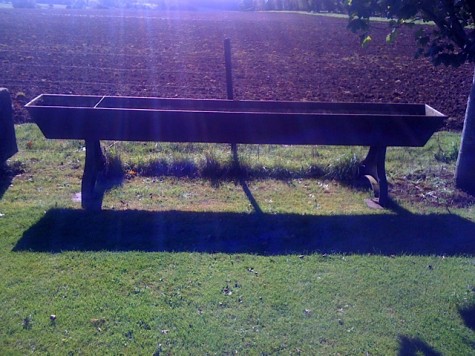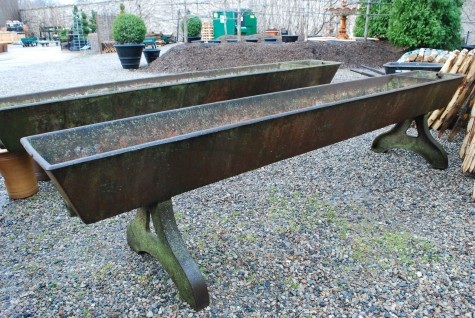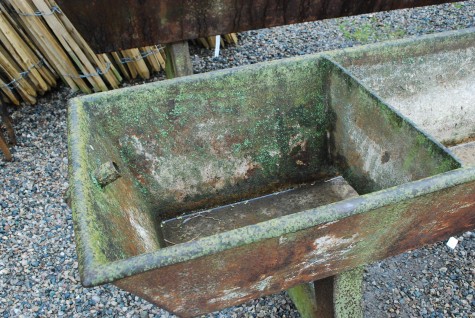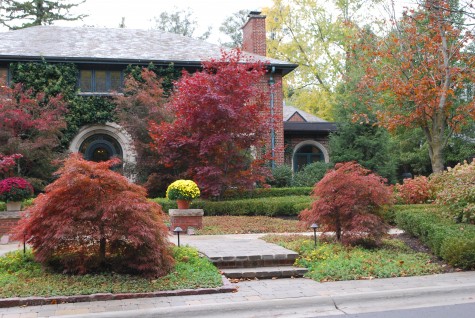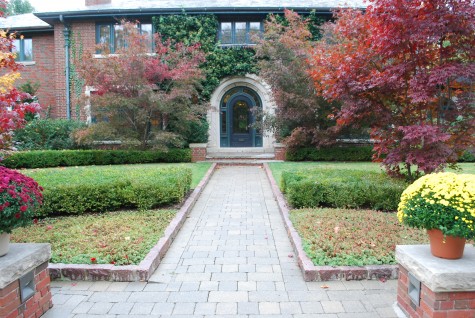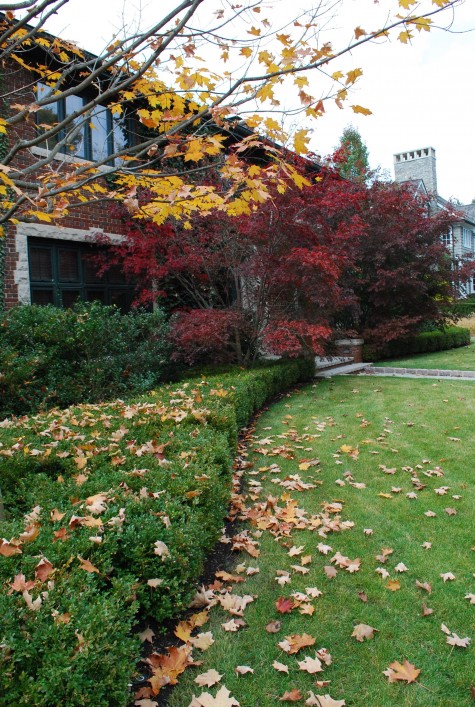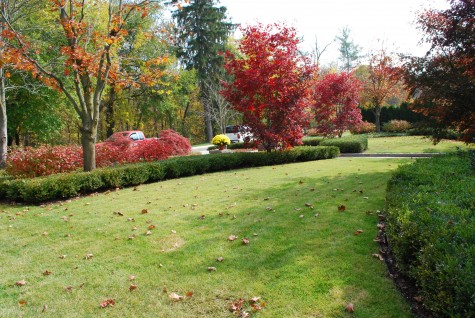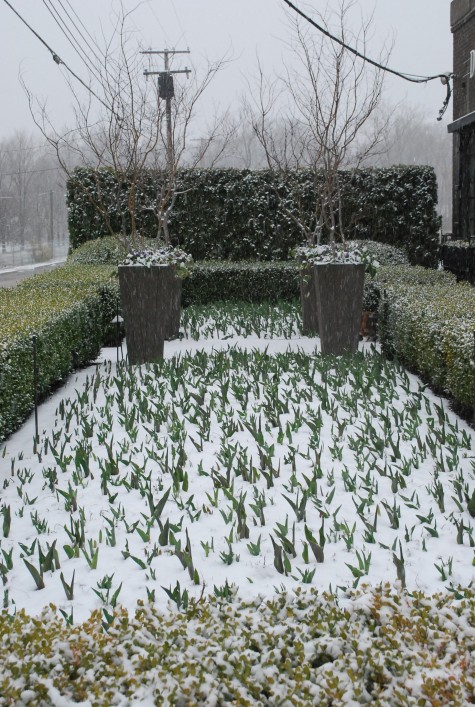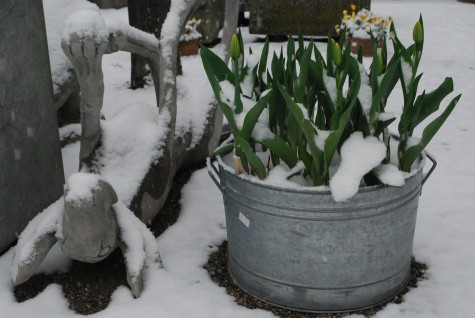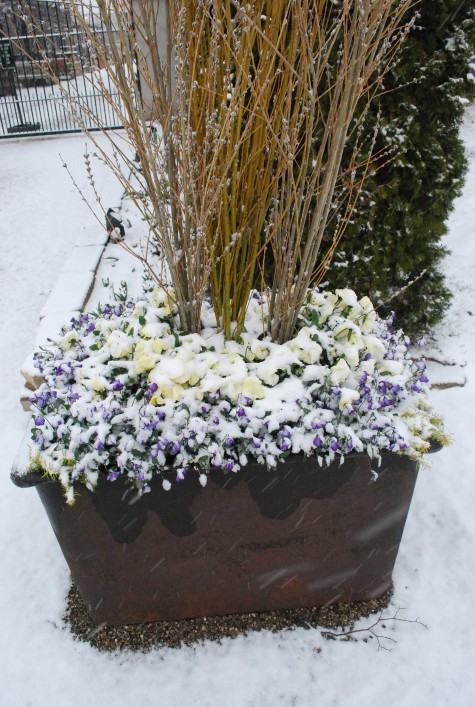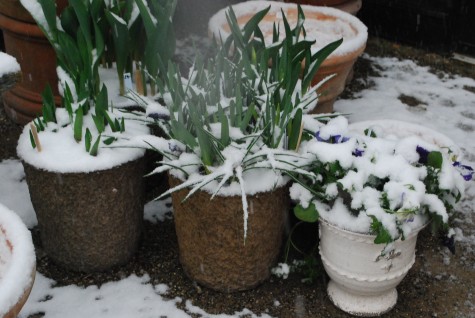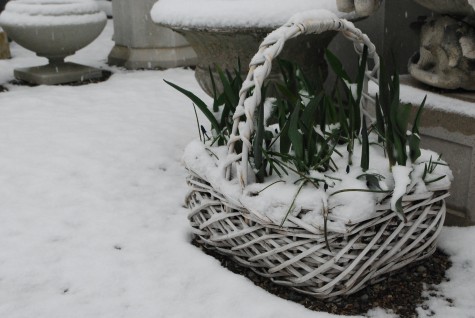 This landscape under renovation is at an even more bare bones stage than it was when I posted about it early in the week. Over the past few days, all of the boxwood surrounding the walk got transplanted to the east and west property lines. All you see left are large and irregularly growing patches of sedum. Sedum does a decent job as a groundcover in full sun, but a plant in this prominent a spot needs to be better than decent. It needs to be stellar. Few very short groundcovers for sun are better than lawn. No living material better describes the sculpture that is a large piece of ground or land. How little could I live with in a landscape? Grass-whether it be mowed or left rough, and some trees.
This landscape under renovation is at an even more bare bones stage than it was when I posted about it early in the week. Over the past few days, all of the boxwood surrounding the walk got transplanted to the east and west property lines. All you see left are large and irregularly growing patches of sedum. Sedum does a decent job as a groundcover in full sun, but a plant in this prominent a spot needs to be better than decent. It needs to be stellar. Few very short groundcovers for sun are better than lawn. No living material better describes the sculpture that is a large piece of ground or land. How little could I live with in a landscape? Grass-whether it be mowed or left rough, and some trees.
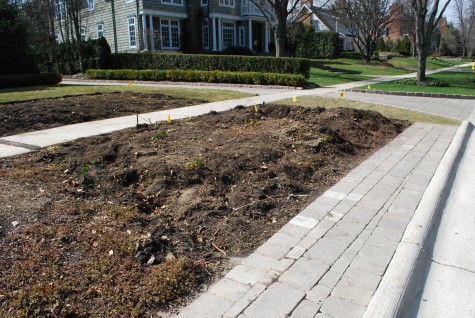 In addition, a very large bed to the east had been mounded quite high with soil. A pink horsechestnut had been planted very high; the bed surrounding it had been built up to the grade established by the crown of the tree. Most of the tree was dead-the living part derelict. The grade would need to be lowered. Cleaning out and regrading takes a lot of time and hard work, but it is the foundation upon which everything to come is built. The shape and grade of the beds and lawn play as important a part in the design process as the plant material.
In addition, a very large bed to the east had been mounded quite high with soil. A pink horsechestnut had been planted very high; the bed surrounding it had been built up to the grade established by the crown of the tree. Most of the tree was dead-the living part derelict. The grade would need to be lowered. Cleaning out and regrading takes a lot of time and hard work, but it is the foundation upon which everything to come is built. The shape and grade of the beds and lawn play as important a part in the design process as the plant material.
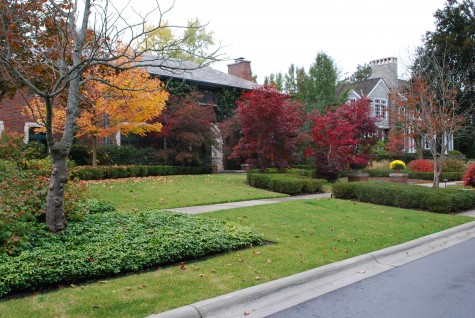
I posted this picture of the house from last October several days ago; there were 15 trees in the front yard. 9 Japanese maples, 1 amelanchier, 2 red horsechestnuts, 1 sugar maple, and 2 red maples. Of the 15, 7 were in an advanced state of decline; I doubt they would have survived but another year or two. Lots of landscape asks for lots of maintenance; the two go hand in hand.
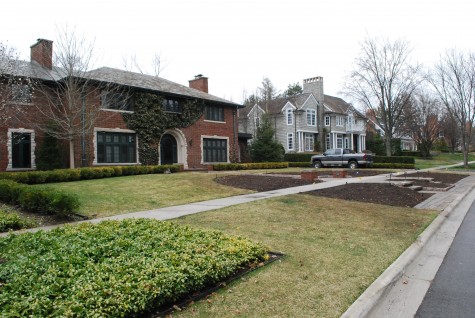 I took this picture yesterday; all of the boxwood has been moved to other spots in the yard. 12 that were heavily damaged by leaf miner and who knows what else were pitched. The ground was regraded to match the grade of the sidewalk and the paver landing at the street.
I took this picture yesterday; all of the boxwood has been moved to other spots in the yard. 12 that were heavily damaged by leaf miner and who knows what else were pitched. The ground was regraded to match the grade of the sidewalk and the paver landing at the street.
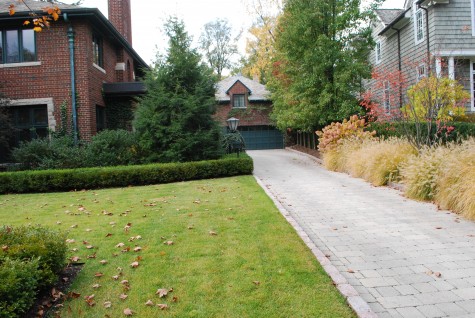 I do have a thing about how a driveway is landscaped. Everyone drives up and down their drive every day. This arrangement is particularly jarring. On the left, lawn, boxwood, a very handsome hemlock, and some hollies. On the right side, a field of ornamental grass intersected with one lone serviceberry, and a blob of hydrangeas.
I do have a thing about how a driveway is landscaped. Everyone drives up and down their drive every day. This arrangement is particularly jarring. On the left, lawn, boxwood, a very handsome hemlock, and some hollies. On the right side, a field of ornamental grass intersected with one lone serviceberry, and a blob of hydrangeas.
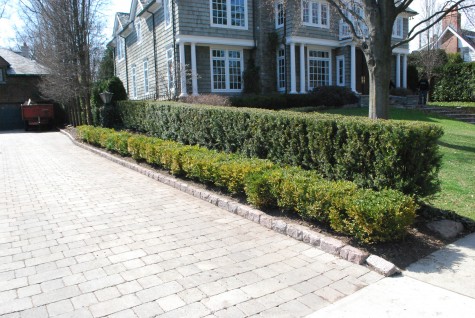 kkTransplanting boxwood to line the drive reveals a particularly handsome and well kept yew hedge which happens to belong to the neighbor. This arrangement which respects that hedge makes it seem as though the yews belong to this property. Borrowing this view helps to visually set the drive within the landscape more gracefully.
kkTransplanting boxwood to line the drive reveals a particularly handsome and well kept yew hedge which happens to belong to the neighbor. This arrangement which respects that hedge makes it seem as though the yews belong to this property. Borrowing this view helps to visually set the drive within the landscape more gracefully.
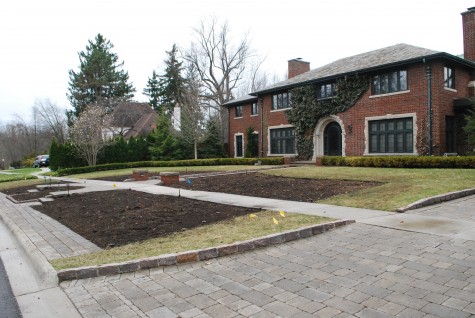 This picture says much about the relationship of the lawn to the landscape beds. The small piece of lawn that runs from the sidewalk to the street is in stark contrast to the giant lawn bed on the far side. Conversely, the landscape bed in the foreground dwarfs the bed on the other side of the walk. This speaks to visual balance. I like asymmetrical compositions, as long as they are balanced. Sometimes it is a good idea not to press a hard boundary too hard. This little snippet of grass next to the curb is all but overpowered by all of the pavers.
This picture says much about the relationship of the lawn to the landscape beds. The small piece of lawn that runs from the sidewalk to the street is in stark contrast to the giant lawn bed on the far side. Conversely, the landscape bed in the foreground dwarfs the bed on the other side of the walk. This speaks to visual balance. I like asymmetrical compositions, as long as they are balanced. Sometimes it is a good idea not to press a hard boundary too hard. This little snippet of grass next to the curb is all but overpowered by all of the pavers.
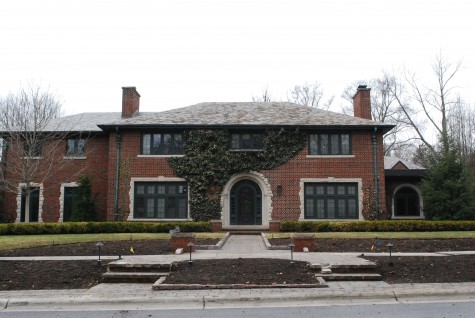 So here we are, on the verge of something new-always a daunting proposition. A landscape renovation of this depth is also a luxury; my client decided to just about start from scratch. Landscapes ordinarily need renovation. Plants fail to thrive or die. A storm can take a giant tree down. A small area may need to be reworked. But this is a large scale renovation. The best of what it has going for it at this moment-a very beautiul house
So here we are, on the verge of something new-always a daunting proposition. A landscape renovation of this depth is also a luxury; my client decided to just about start from scratch. Landscapes ordinarily need renovation. Plants fail to thrive or die. A storm can take a giant tree down. A small area may need to be reworked. But this is a large scale renovation. The best of what it has going for it at this moment-a very beautiul house
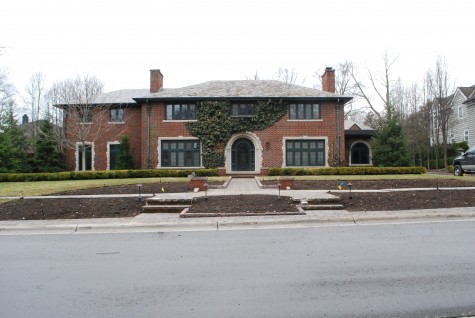
This is a very important and exciting moment-there is a spirited conversation going on.
